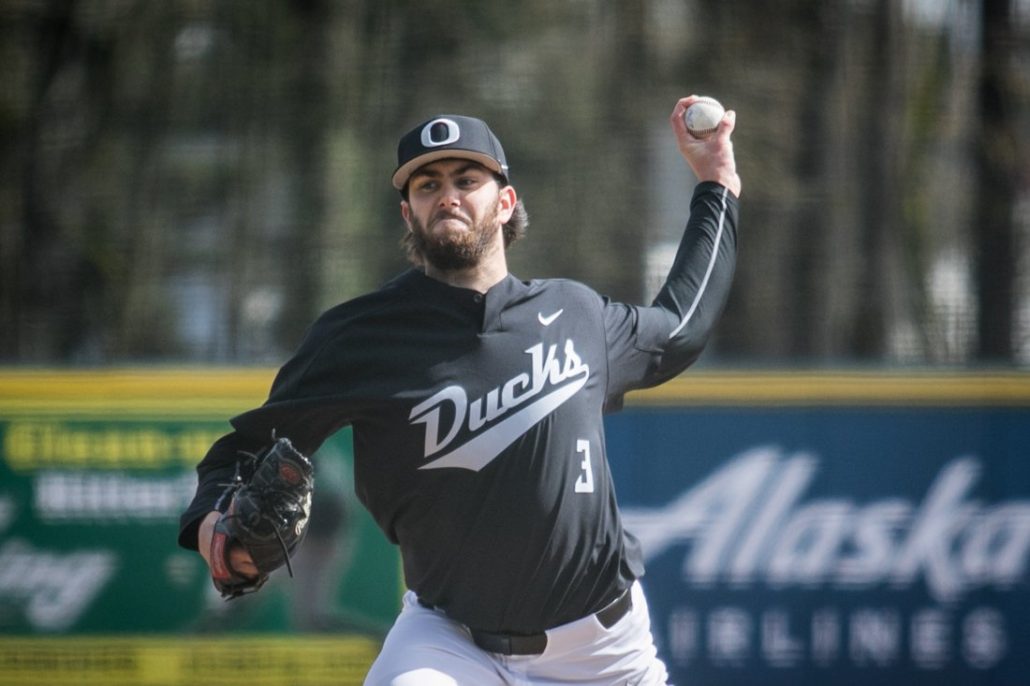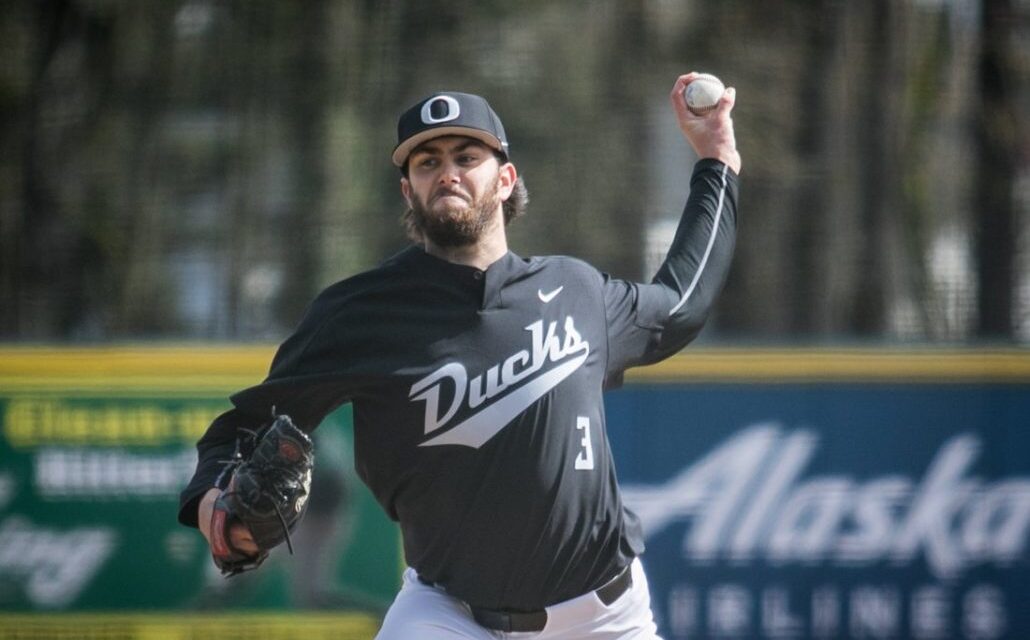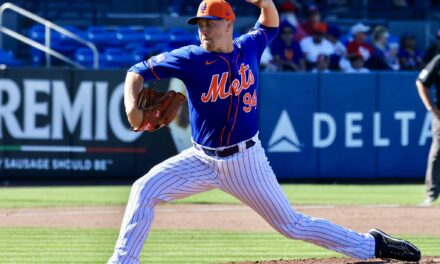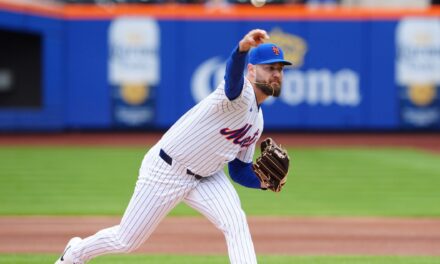
If you follow me on Twitter (@stephenjosiah13) you were probably bombarded with tweets on draft night earlier this week in the form of a three act play:
Act I: I hope David Peterson is available for the Mets No. 20 pick.
Act II: OH MY GOD DAVID PETERSON IS AVAILABLE I HOPE THE METS DRAFT HIM.
Act III: IT HAS HAPPENED!
I’d like to share a bit of what made me so high on David Peterson and why I’m thrilled with the pick.
At 6’6″ and 240 pounds, Peterson generates low-90s heat and a wipe out slider from 3/4 on the left side.
His size, velocity and feel for a good slider already creates an excellent template for a starting pitcher and the exact type of arm the Mets have had success developing in the Sandy Alderson regime.
But Peterson’s story hardly stops there; He throws a change and a curve that do not yet receive great marks. I understand the curve not getting love, but I do not get the lack of adoration for the change.
What I have seen from video looks solid and that thought was solidified after I read Taylor Blake Ward’s (Scout.com) impression of his change: “His best off-speed offering is his above-average, low 80s changeup that he works against both righties and lefties.”
I believe that fans who are wary of this pick are undervaluing that change and/or the Mets ability to nurture it and turn it into a true plus pitch (if it isn’t already).
89-94 from the left side is more than enough velocity and what makes Peterson stand out for a big-bodied power arm is his command.
He struck out 140 in 100 1/3 IP as a junior this year and walked only 15. For those following along at home, that’s a 9.33 K/BB ratio. That excites me.
He already controls his pitches and it seems reasonable to expect he could add velocity as he ages given his massive frame. Even if he fails to, low-90s with command from the left side plays.
The 2017 MLB Draft was not a great one. The true impact talent was gone by the fifth or sixth pick and after that it became a minefield the next 20 selections.
Personally, I thought Peterson was a top-10 talent that was going to get snagged before we picked, and Baseball America and MLB.com agreed, as both projected the Brewers would draft him at No. 9.
However, as more and more teams passed on the college arms in lieu of the intriguing prep talent in the class, Peterson fell into the Mets lap.
I love his size, command, and that he already throws four pitches–two of which are plus already. He has movement on the fastball and shows no reservations on pitching inside. He notably struck out 20 Arizona State Sun Devils in a game this year.
He has a high floor and a surprisingly high ceiling for a college junior, which made him a salivating option available at No. 20.
If you are looking for a comparison, you could look at Sean Newcomb–the Braves farmhand who made his debut against the Mets last week.
Peterson has better overall stuff at the same point in his career, though, and could miss more bats as a pro.
My hope is that he can do what Steven Matz has done–throw strikes, generate ground balls, miss bats, limit walks, and slot right into a No. 2 or No. 3 role on what should still be a dominant rotation the Mets could have in 2019.
Thoughts from Rob Piersall…
I really liked the Peterson selection. It is important that we replenish our pitching in the lower levels and taking college arms is the best way to do that.
With Peterson’s stature and the fact that he’s a lefty make him very appealing from a draft standpoint and him striking out 20 batters is hopefully a precursor for what he can eventually bring to the Mets.
However, we have to remember that he’s just a kid and to avoid looking at these comparisons to already established major leaguers.
It puts unnecessary expectations on a young player. What I want to see is for him to progress and see how he develops through our system naturally.
But I think that we could have a really good pitcher on our hands. Time will be the only test.
















